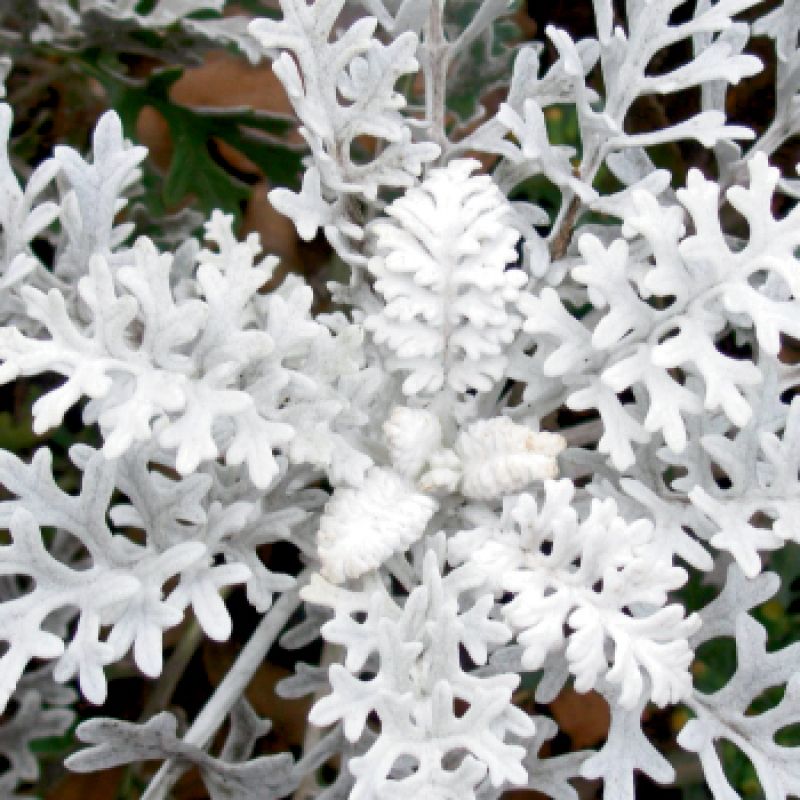
This holiday, extend the festivities outdoors by sprinkling silver and white foliage among other seasonal plants. The shimmery metallic glow of perennials such as dusty miller, artemisia, and cardoon naturally reflects moonlight, providing a dreamy setting for outdoor gatherings. These classic winter shades create a unique contrast to both hot and cool colors and can be used year-round in garden beds and containers to highlight bold blooms. Get the scoop on adding these silverly beauties to your landscape.
A cool-season grower in the Lowcountry, this plant has brilliant white, wooly foliage that complements any bloom, as well as a shallow root system ideal for containers. Use it densely in a garden bed to create the effect of a blanket of snow.
Hardiness: Zones 7-10
Light: Full sun to partial shade
Soil: Well-draining
Water: Requires weekly watering
Maintain: Shear back if plants become leggy.
Deeply lobed and spiny leaves cover this Mediterranean native’s strong, gracefully arching stems, which can reach up to six feet in height. Stunning silver-gray leaves add interest and texture during winter months, and come spring, the plant sends out large purple, thistle-like blooms. It also contains edible stalks that impart a mild artichoke flavor when prepared properly.
Hardiness: Zones 7-9
Light: Full sun
Soil: Well-draining
Water: Requires weekly watering
Maintain: Prune as needed in summer months.
Let this evergreen’s silver, lace-like foliage billow softly throughout the garden and light up pathways. Also known as wormwood, this drought-tolerant plant thrives in lean soil and reaches up to three feet.
Hardiness: Zones 6-9
Light: Full sun
Soil: Well-draining
Water: Once established, water sparingly. Maintain: Prune in spring when new growth appears.